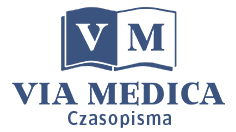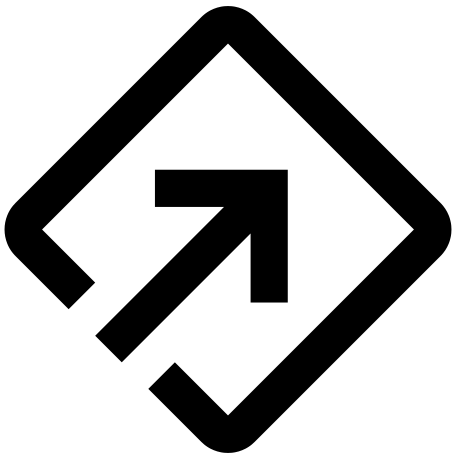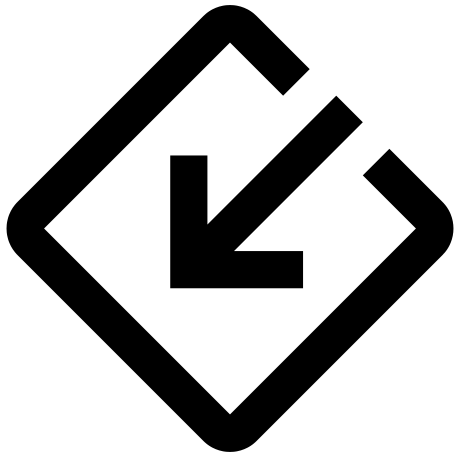dostęp otwarty
Zespół wypalenia wśród studentów medycyny — prospektywne badania roczne
dostęp otwarty
Streszczenie
WSTĘP: Zespół wypalenia jest zjawiskiem psychicznego i fizycznego wyczerpania, które powstaje w sytuacji angażowania się zbyt długo w działanie wyczerpujące indywidualne zasoby. Występuje on u około 5% populacji i rozpatruje się go zazwyczaj w kontekście zawodowym (wypalenie zawodowe). Obecne dane wykazują jednak, że cechy zespołu wypalenia są obecne u 25% studentów medycyny, a wśród rezydentów osiągają nawet 75%. Dlatego uważa się, że zespół wypalenia rozwija się już w trakcie studiów medycznych, pogłębiając się w trakcie dalszej kariery lekarza. Zmiany te wpływają negatywnie na jakość pracy zawodowej. W artykule zaprezentowano, jak zjawisko wypalenia narasta w grupie studentów medycyny w trakcie jednorocznej obserwacji.
MATERIAŁ I METODY: Ta sama grupa studentów medycyny została zbadana za pomocą Inwentarza Wypalenia według Maslach (MBI) w 2014 roku i w 2015 roku, tj. na czwartym i piątym roku sześcioletnich studiów.
WYNIKI: Wypalenie wśród studentów znacząco wzrosło po upływie roku, z 27% do 31% w grupie osiągając ≥ 27 punktów w podskali emocjonalnego wyczerpania MBI. Równoważąc ten efekt, satysfakcja z profesjonalnych osiągnięć wykazała również tendencję wzrostową.
WNIOSKI: Zespół wypalenia jest zjawiskiem narastającym proporcjonalnie do czasu długości studiów. Chociaż jego ryzyko zwiększa się szybko w trakcie trwania studiów, najbardziej dramatyczne przejawy są spostrzegane znacznie później, dopiero w życiu zawodowym. Najważniejszym wnioskiem jest więc rozpoczęcie profilaktyki tak szybko jak to możliwe, to znaczy jeszcze podczas studiów.
Streszczenie
WSTĘP: Zespół wypalenia jest zjawiskiem psychicznego i fizycznego wyczerpania, które powstaje w sytuacji angażowania się zbyt długo w działanie wyczerpujące indywidualne zasoby. Występuje on u około 5% populacji i rozpatruje się go zazwyczaj w kontekście zawodowym (wypalenie zawodowe). Obecne dane wykazują jednak, że cechy zespołu wypalenia są obecne u 25% studentów medycyny, a wśród rezydentów osiągają nawet 75%. Dlatego uważa się, że zespół wypalenia rozwija się już w trakcie studiów medycznych, pogłębiając się w trakcie dalszej kariery lekarza. Zmiany te wpływają negatywnie na jakość pracy zawodowej. W artykule zaprezentowano, jak zjawisko wypalenia narasta w grupie studentów medycyny w trakcie jednorocznej obserwacji.
MATERIAŁ I METODY: Ta sama grupa studentów medycyny została zbadana za pomocą Inwentarza Wypalenia według Maslach (MBI) w 2014 roku i w 2015 roku, tj. na czwartym i piątym roku sześcioletnich studiów.
WYNIKI: Wypalenie wśród studentów znacząco wzrosło po upływie roku, z 27% do 31% w grupie osiągając ≥ 27 punktów w podskali emocjonalnego wyczerpania MBI. Równoważąc ten efekt, satysfakcja z profesjonalnych osiągnięć wykazała również tendencję wzrostową.
WNIOSKI: Zespół wypalenia jest zjawiskiem narastającym proporcjonalnie do czasu długości studiów. Chociaż jego ryzyko zwiększa się szybko w trakcie trwania studiów, najbardziej dramatyczne przejawy są spostrzegane znacznie później, dopiero w życiu zawodowym. Najważniejszym wnioskiem jest więc rozpoczęcie profilaktyki tak szybko jak to możliwe, to znaczy jeszcze podczas studiów.
Słowa kluczowe
wypalenie, studia medyczne, profilaktyka

 Informacje o artykule
Informacje o artykuleTytuł
Zespół wypalenia wśród studentów medycyny — prospektywne badania roczne
Czasopismo
Numer
Typ artykułu
Praca badawcza (oryginalna)
Strony
224-228
Opublikowany online
2016-12-20
Wyświetlenia strony
3165
Wyświetlenia/pobrania artykułu
6865
Rekord bibliograficzny
Psychiatria 2016;13(4):224-228.
Słowa kluczowe
wypalenie
studia medyczne
profilaktyka
Autorzy
Olga Łoza

 Referencje (21)
Referencje (21)- Greene GA. Burnt-out case. Heinemann, London 1960.
- Freudenberger H. Staff Burn-Out. Journal of Social Issues. 1974; 30(1): 159–165.
- Stoyanova R, Harizanova S. Economic losses caused by burnout syndrome among prison personnel in Bulgaria. . Int. J. Health Economics. 2013; 3.
- Bianchi R, Boffy C, Hingray C, et al. Comparative symptomatology of burnout and depression. J Health Psychol. 2013; 18(6): 782–787.
- Bianchi R, Schonfeld I, Laurent E. Is burnout a depressive disorder? A reexamination with special focus on atypical depression. International Journal of Stress Management. 2014; 21(4): 307–324.
- Maske UE, Riedel-Heller SG, Seiffert I, et al. [Prevalence and Comorbidity of Self-Reported Diagnosis of Burnout Syndrome in the General Population]. Psychiatr Prax. 2016; 43(1): 18–24.
- Yang S, Meredith P, Khan A. Stress and burnout among healthcare professionals working in a mental health setting in Singapore. Asian J Psychiatr. 2015; 15: 15–20.
- Łoza O. Porównanie zespołu wypalenia u studentów dwóch uniwersytetów medycznych (Warszawa, Koszyce). Psychiatria . 2015; 12: 108–112.
- Boczek K. Stachanowcy w kitlach. Służba Zdrowia 2012 17.12.2012.
- Gazeta Lekarska. Lekarka zmarła na dyżurze, znamy stanowisko MZ.
- Ishak W, Nikravesh R, Lederer S, et al. Burnout in medical students: a systematic review. Clin Teach. 2013; 10(4): 242–245.
- Ishak WW, Lederer S, Mandili C, et al. Burnout during residency training: a literature review. J Grad Med Educ. 2009; 1(2): 236–242.
- Shanafelt TD, Hasan O, Dyrbye LN, et al. Changes in Burnout and Satisfaction With Work-Life Balance in Physicians and the General US Working Population Between 2011 and 2014. Mayo Clin Proc. 2015; 90(12): 1600–1613.
- Maslach C, Jackson SE, Leiter MP. The Maslach Burnout Inventory: Manual. Palo Alto: Consulting. Psychologists Press. 1996.
- Kristensen T, Borritz M, Villadsen E, et al. The Copenhagen Burnout Inventory: A new tool for the assessment of burnout. Work & Stress. 2005; 19(3): 192–207.
- Dahlin M, Joneborg N, Runeson B. Performance-based self-esteem and burnout in a cross-sectional study of medical students. Med Teach. 2007; 29(1): 43–48.
- Cecil Jo, McHale C, Hart Jo, et al. Behaviour and burnout in medical students. Med Educ Online. 2014; 19: 1–9.
- Kushnir T, Cohen AH. Positive and negative work characteristics associated with burnout among primary care pediatricians. Pediatr Int. 2008; 50(4): 546–551.
- Chesanow N. Residents Lifestyle and Happiness Report 2016. Medscape. . http://www.medscape.com/features/slideshow/residen tslifestylereport2016#page=5 (17.08.2016).
- Dyrbye LN, Harper W, Durning SJ, et al. Patterns of distress in US medical students. Med Teach. 2011; 33(10): 834–839.
- Zhang X, Klassen R, Wang Y. Academic Burnout and Motivation of Chinese Secondary Students. International Journal of Social Science and Humanity. 2013; 3: 134–138.










